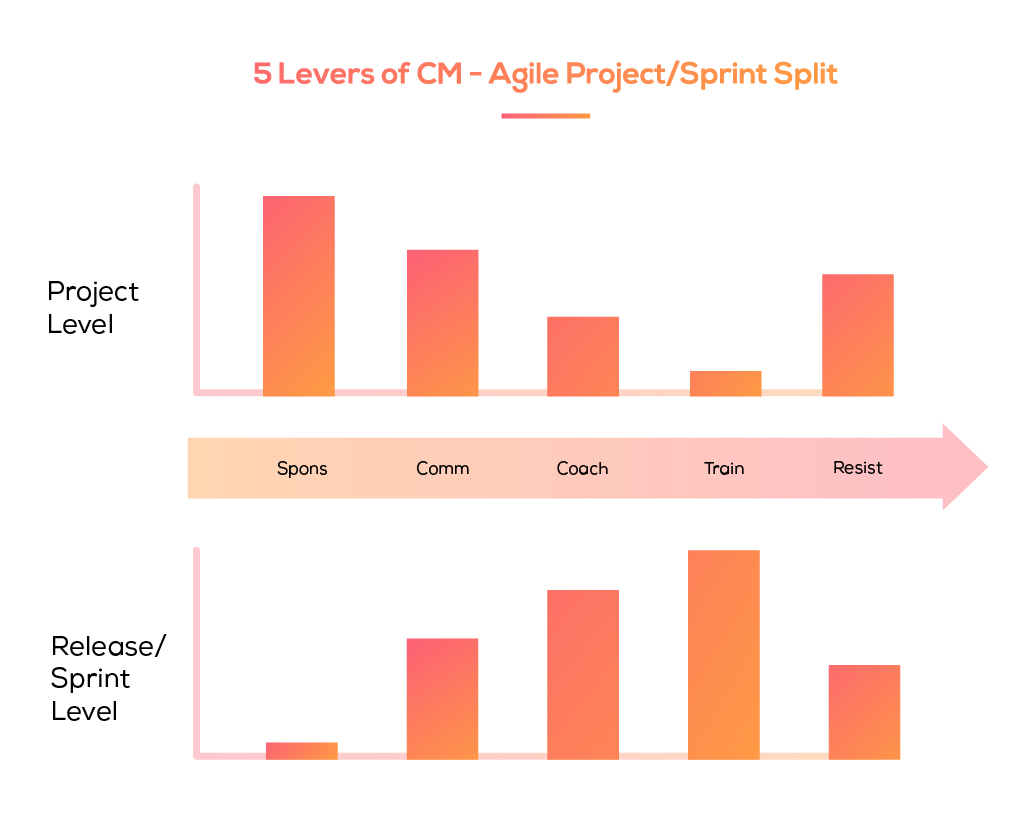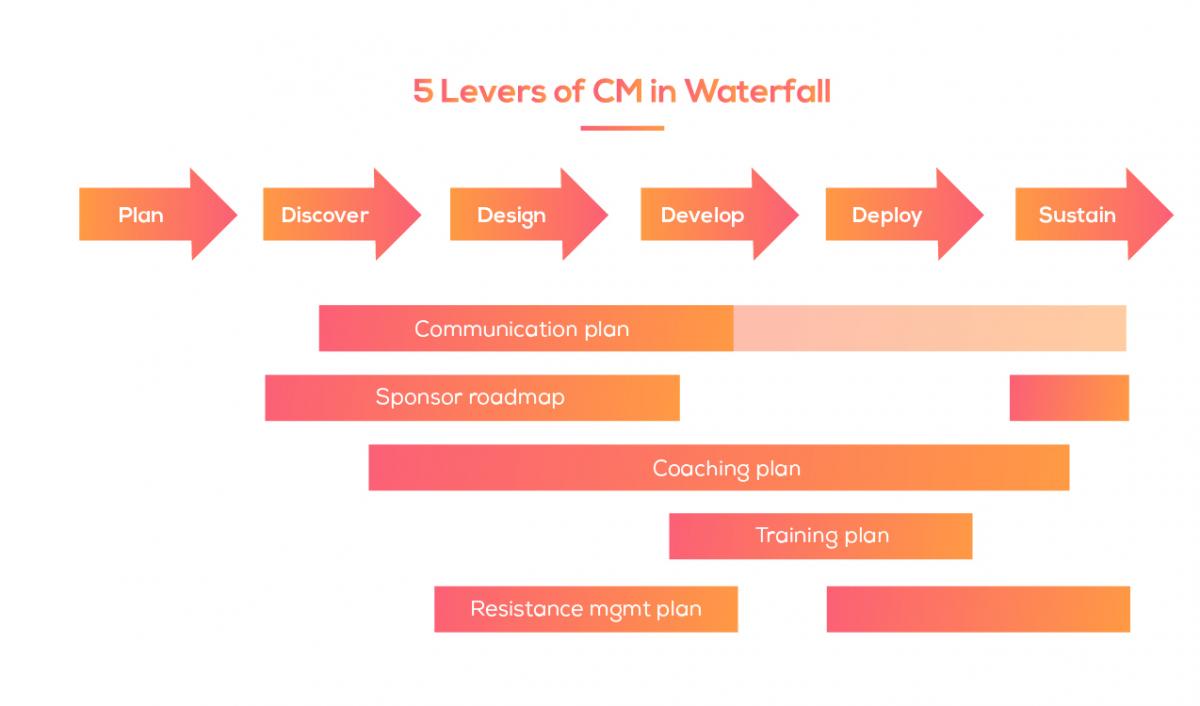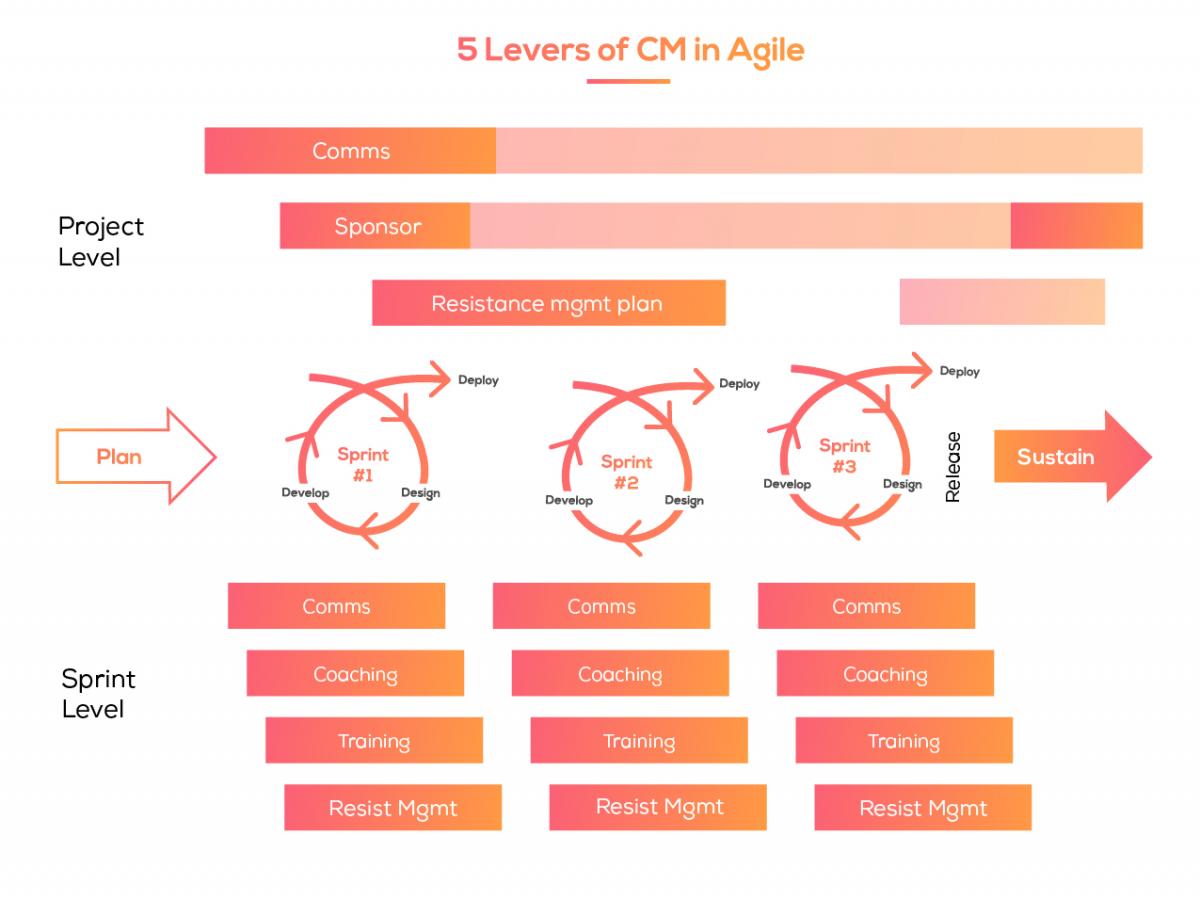Making the most of Prosci’s Five Levers in Agile.
14 Apr 2020
Here is everything you need to know to work your way around sprints and releases.
Article written by Vincent Piedboeuf
14 Apr 2020
Here is everything you need to know to work your way around sprints and releases.
Article written by Vincent Piedboeuf
Welcome back to our comprehensive series on Agile and CM! As we dig deeper into the practical aspects of integrating Change Management and Agile, now is the time to review the entire host of CM plans required to get the ball rolling. Here is everything you need to know to work your way around sprints and releases.
Back to the basics: five levers of CM and ADKAR.
With PROSCI’s five levers, the process of change is given flesh and bones. A robust sponsorship roadmap is critical to enable leaders to be the face and voice of change. A carefully crafted communication plan also ensures that the message is sent at the right time to the right people through the right channel. Further down the road, empowering managers and frontline employees through the transition will call for a proper coaching plan. Equally important is the training plan designed to help people develop the skillsets needed to deploy and utilise the change. Resistance is inherent to change but cannot be left unchecked. Having a resistance management plan – the fifth lever – is thus pretty much a no-brainer.
You’ll need to have these plans ready upfront to complete each step of the ADKAR sequence. Sponsorship, communications and coaching are key to raise Awareness and ignite the process. When it comes to creating Desire, resistance management is thrown into the mix, along with sponsorship and coaching. More coaching and a solid training plan will help build Knowledge and Ability. And if you have made it through the process and now need to Reinforce the change, congratulations, you clearly made clever use of the right levers!
Reordering your plans in Agile?
Again, adjusting to Agile means splitting activities into two sections or, better said, levels: project and releases. Sponsorship is organically connected to the project level. Indeed, the overall purpose is to drive engagement and help people make the change their own. Applying common sense, communication activities should be conducted at both levels. Coaching and training, on the other hand, are driven by releases, closely mirroring sprint practices and delivered just in time. Reinforcement efforts should take place at both levels in order to ensure deep-seated change and a smooth progression across releases.

Now, what about “timing”? In the traditional waterfall method, all plans unfold and are being kicked off earlier or later during the lifecycle of the project, as shown in the graph below. In Agile, however, dynamics play out at two levels. Sponsorship, communication and resistance management plan are designed at the project level, coming to life sprint after sprint, release after release. Each release, in turn, calls for specific and targeted training, coaching, communication and resistance management plans. Parallel operation and sub-cycles are Agile’s distinguishing features.


What to adapt?
In the light of Agile’s specific challenges, each lever requires the following set of adjustments:
In our next and last instalment on Agile and CM, we’ll look into CM roles. The whole series will soon be fully accessible on our blog. Feel free to take a look and explore our extensive library of resources on CM!
We cannot discuss Change Management and Agile integration, unless we explain how ADKAR gets reconfigured in Agile.
Written by
Vincent PIEDBOEUF
“How to” integrate CM and Agile: what you need to know before starting.
Impact of Agile on CM, key success factors and obstacles.
Written by
Vincent Piedboeuf